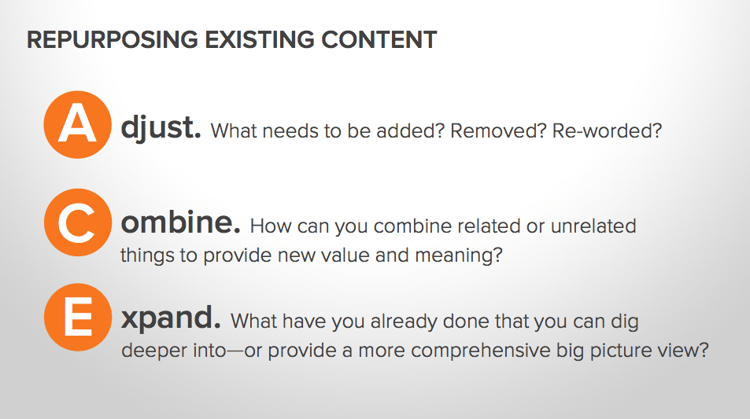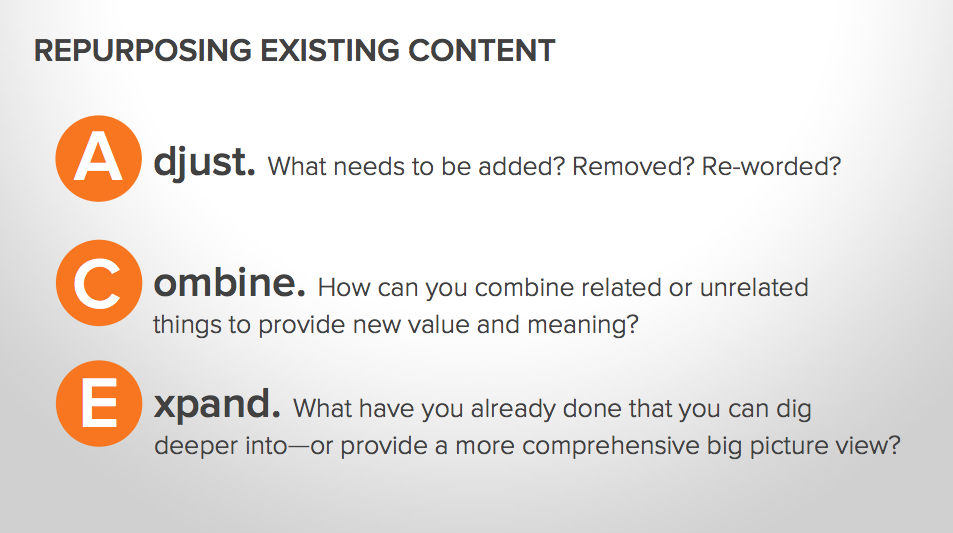
Everything marketers need to know about Inbound content
As Silver Agency Partners, Strategic are in Boston again at HubSpot’s annual Inbound get-together!
With a week to learn as much from HubSpot and other Inbound professionals as possible, this year is my first at Inbound, my focus being that crucial component of every Inbound campaign: content.
This morning alongside 75 content professionals I joined Inbound HubSpot Professor Lindsay Thibeault’s Inbound Content session. In addition to some great perspective from other Inbounders the session contained a lot of points relevant to anyone involved in the content process, whether that means writing, distributing, promoting, managing or planning campaigns. So what key points were outlined?
Content: the basics
44% of B2B marketers have a documented content strategy. 39% of B2C marketers have a documented content strategy. But while those numbers are growing, content challenges are still very common!
- Key challenges content professionals face are: time, resourcing, content direction, ensuring clients understanding of processes, outsourcing, and sufficient knowledge proficiency to create content.
- Quality vs quantity? While volume is good, if content is irrelevant to your personas it wont help you. Quality is key to generate the right attention.
Stuck for a topic? Think about the solution you provide. It more than likely can be tweaked to give you an initial content title!
[Insert the solution you provide] That’s almost a good content title if you think about it! #ContentStrategy #Inbound15 #ITD15
— Lucy Jones (@LucyJones_SIC) September 8, 2015
Content planning and creating remarkable content
Content is defined by 3 key things: purpose, topic and format:
- Purpose – Think about why are you creating a piece of content. What is it designed to achieve? Do you need a content offer (eg premium content, gated behind a landing page, or form?) Or are you creating a blog or site content, pitched at the ‘awareness’ stage of the buyers journey, to inform? Remember – your content may fall into both categories!
- Content Format – This will be influenced by your buyer persona preferences, but there’s no real right of wrong format. Trial and error are key, so test and experiment. Blogs, ebooks, webinars, whitepapers – try it!
- Topic – What are you writing about about? Does it consider your persona pain points, and match up with where they are in the buyers journey (awareness/consideration/decision)? Always build content that focuses on how solve the problem your buyers have.
Identify content topics that matter via keyword research, internet forums, popular industry news, sales FAQ’s, and your persona’s goals and challenges.
Best practices for content creation
- Always focus on mapping content to your specific personas and where they are in the buyers journey.
- Less is more: your personas are just as busy as you are – make it easy for them to consume your content. Don’t worry too much about word count and length. If you can say what you need to in a couple of pages, or in a 200 word blog, that’s fine!
- Keep content educational, not promotional. It’s not until the final decision stage of the buyers journey that your products and services should be mentioned.
- Focus on information first, design second. Prioritise writing great content over the initial design – once you have the structure the design will be easier to place!
Well-said: RT @MissMaxdalena "Keep it educational, not promotional" @LindsayRegina on creating great inbound content #INBOUND15 #ITD15
— Irina Jordan (@IrinaJordan) September 8, 2015
Reverse engineering your content creation
Stuck for what to say? Then reverse-engineer your content using your main content theme idea. Break your idea down into sections, then create multiple pieces of content around each point. This ensures that the whole process; from blogs to CTAs to content offer landing pages are seamlessly linked:
- Define your content idea/premium content offer
- Break down your content offer idea into digestible parts
- Create a blog post for each digestible part
- Use those combined blog posts to create a main content offer such as an ebook – add additional value with new information, or niche persona targeting.
- Create your landing page, thank you pages and CTAs for your content offer
- Insert your CTAs in your blog post – ta-da! One seamless campaign of content.
Not sure how much content to give away or what to gate behind a landing page? Then think of your content like a puzzle piece, give away a little bit, but only a hint, not enough to show the whole picture. You still want to entice that download conversion!
Note – you should not copy and paste your content when using blogs to form content offers or vice versa. If you recycle it – reword it! New content needs context, new information, new helpful value for your buyer/reader or they’ll just stop reading!
Social Media and Content Distribution
Once you have content, you’ll want to promote it to get best traction! Even if you’re new to content marketing you likely already have a lot of content you can reuse and amplify. If it’s evergreen content especially (meaning it’s always relevant) then just tweak it and distribute!
- Spend as much time on content promotion as you did creating a piece of content (over time)
- Distribute/share your content via social, email newsletters and workflows, landing pages, guest posts – any way you can think that your buyers will see it!
Metrics to consider when analysing content effectiveness
Measurement is key if you want o prove success, and grow. Key content metrics you should consider include:
- Number of visits (page views and overall traffic to your content)
- Keyword / search ranking
- Leads generated
- Social proof, share-ability
- Inbound links
- CTA submissions/conversion
- Content performance by author (reads, shares, visits, comments – get competitive)
- Content performance by topic
- Content performance by format
Remember to set your benchmarks! If you don’t know where you’re at, you can’t work towards a goal and improve.
Competitor analysis is another key consideration. Find out what content your competitors create, what stage of the buyers journey they target, what content formats they have and the quality of their content. Aim to see what they’re doing right and not only emulate it – but take it further.
Repurposing Content
There are multiple reasons to repurpose a piece of content;
- To extend the reach of an existing piece of content
- To save content creation time
- To help content appeal to a new audience/persona
- To increase your content’s longevity, or add additional value (such as creating a different content type)

4 ways to repurpose content
- Bundle up your existing content around a theme (say, blogs on content marketing) into one content offer. Remember to recycle and add additional value into any premium content you create.
- Transform internal documentation into external offers. Have you created any guides or info for your staff that might work well (if tweaked) externally?
- Tailor your content to different personas; either for new, or reviewed personas (remember you should be regularly reviewing your personas for accuracy)
- Tailor your existing content for different points in the buyers journey. Assess your content to identify where your buyers journey content gaps lie.
Next content steps
It’s a lot to take in, but before you get started, it’s best to begin with a content audit. Review what content you have and what buyer stage it speaks to, see where you can improve and gradually build your content library.
Remember – it’s not just about content, but how you use that content that makes it remarkable!



